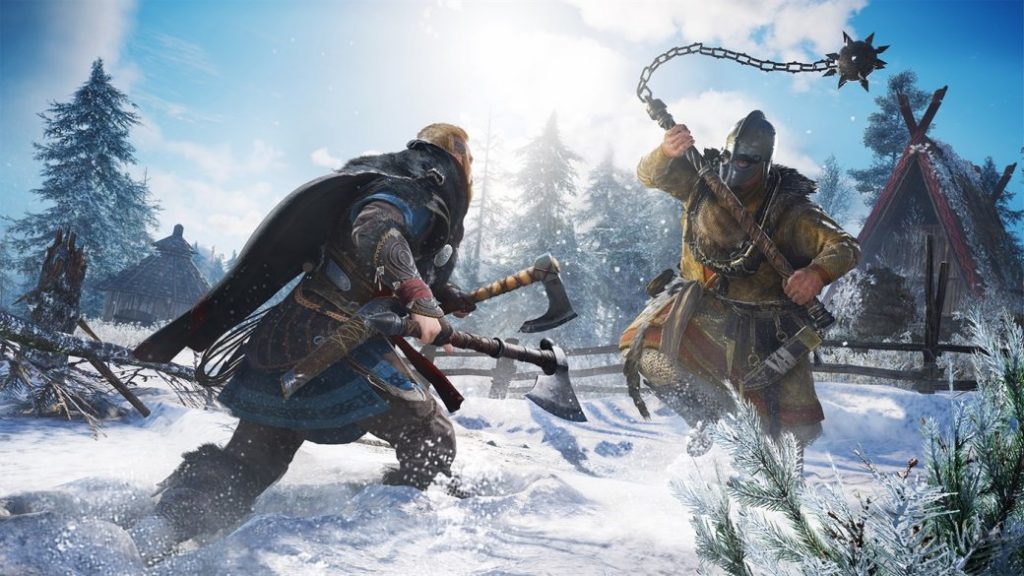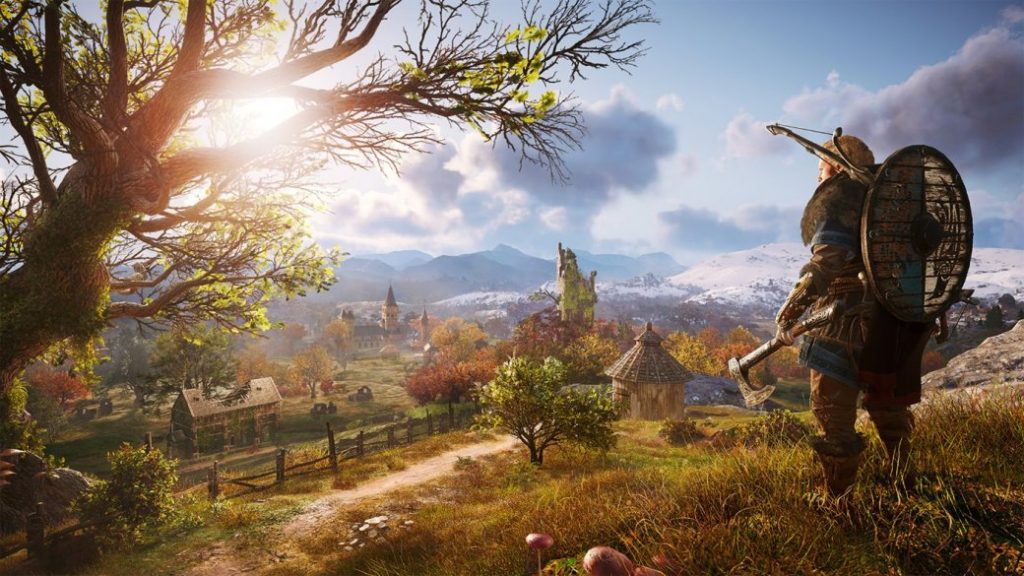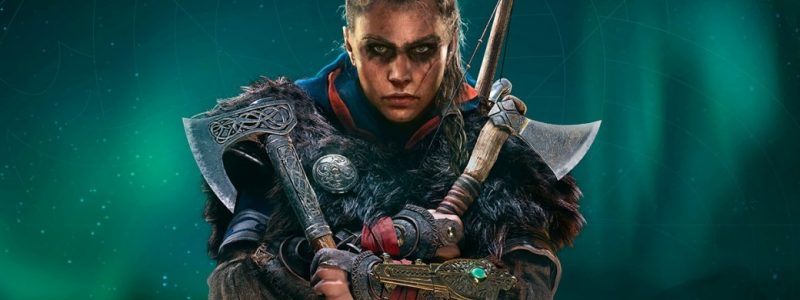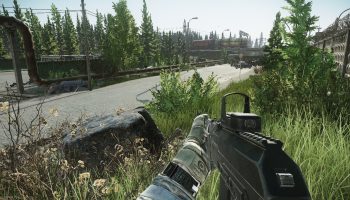Assassinʼs Creed: Valhalla is the third installment of the “newest Assassinʼs Creed trilogy” that Ubisoft launched with the release of Origins. A confident movement towards RPGs, a completely different approach to creating activities in the open world, dialogues and evens the possibility of choice – this is exactly what the developers of the two previous games were betting on.
It seemed that Valhalla would work on the same ideas and mechanics – and it really works … on some of them. She denies the rest. What’s more, she proudly returns to where the series began. Once again, makes classic assassins an important part of the story.
Valhalla is dedicated to one of the most interesting periods of the early European Middle Ages – the Viking invasion of the British Isles. For several centuries, fierce warriors have significantly influenced the history of the future England, mainland Europe and Russia. The northerners even managed to get to North America – and in the new Assassin’s Creed, this fact also matters.

We play as Eyvor – a man or a woman: you can choose the gender at the beginning of the game, or you can choose nothing else – then the game, arguing this with the work of the “Animus”, in certain scenes will itself change the male protagonist to the female one.
The idea is that in the DNA of Eyvor, two images coexist at once, which is reflected in the gameplay. Apparently, this will also affect the plot in one way or another – the assassins of the present, namely, Leila Hassan, who is familiar from two past games, mentions this fact so often that it simply cannot mean anything to the history of Valhalla.
In the present tense, everything is still: the world is under threat, but Leila is still trying to save it, turning to the past for answers. In the Odyssey, she received many of these answers – and even acquired the staff of Hermes, and now a mysterious message has led her to the grave of Eyvor, next to which she, with the help of the Animus, finds out the fate of the legendary Viking.
In his time, Eyvor is a harsh inhabitant of the north with a difficult fate. The hero was left without parents early and was brought up by the king of one of the Norwegian clans. Growing up and gaining strength, Eivor decides to avenge his family – and just this little story of revenge is dedicated to the prologue of Assassin’s Creed: Valhalla, which takes place in Norway. It is done in approximately the same way as in the “Odyssey”: a relatively small area and several side activities for 3-4 hours, as well as an acquaintance with the key mechanics.
Due to a plot twist, Eivor and his team of loyal warriors will soon go to England to build their own kingdom, but until then, a few interesting details will become clear. Firstly, two characters suddenly appear in the plot, through which Ubisoft will make several references to the early games of the series at once. Secondly, after the “Odyssey” will return sensible secret murders – such as the authors of the series showed them before “Origins”. And thirdly, it turns out that “social stealth”, a long-forgotten mechanic, works again in this game – you can and should move around enemy territory, putting on a hood and merging with passers-by. A separate moment is a joke about a hidden blade, which will definitely be appreciated by everyone who remembers that killers in cloaks once cut off one finger to use their main weapon.

Valhalla brings ideas of new and old parts together, forgetting everything that the series has been criticized for over the past few years. For example, the same timid steps towards RPG remained in Odyssey. In Valhalla again there are dialogues (only with the key characters for the plot), but they practically do not put the hero before the moral choice, since this game simply does not need him. And with side quests they did it even easier – now they are not at all. Rather, there are so-called “world events”, the protagonist can become a witness and participant of which, if he wants, but the records about them do not even fit into the journal. This is exactly what unique scenes that can be noticed while exploring the world of the game.
In addition to such events, the British Isles are full of treasures, ancient tombs and small activities like the pursuit of collectibles. And in the center of the story is the main plot, from which you can finally not be distracted.
And one more thing that I can confidently talk about at this stage of the passage of the new Assassin’s Creed is the combat system.
The action in “Valhalla”, in comparison with what was in “Odyssey”, has been made a little more complicated and made it … well, a little deeper, perhaps. Now enemies cannot be simply spammed with hits and special skills, as in Odyssey – due to the stamina and slightly reworked adrenaline mechanics required to use abilities.
With stamina everything is clear, I think: the scale is spent when you block and dodge, and therefore you should fight more deliberately. Don’t beat your enemies in vain and don’t waste your stamina. In addition, there are many opponents with shields in “Valhalla”, and these shields are likely to break – from each blow with an ax, several pieces of wood fly off them. Looks great and does not allow you to just hack to death everyone you meet. Adrenaline is now simply less. The skills themselves are expected: everything is about the same as in the same “Odyssey”, plus the ability to throw axes at enemies – a game about the Vikings.
In general, the battles in Assassin’s Creed are still not the most important gameplay element, although, specifically, “Valhalla” clearly would not hurt fundamental changes in the combat system. Changes that would make all of these multi-enemy fights a reason to return to the game every time.
The fact is that Valhalla’s setting also affects what is happening around. And around, let me remind you, the harsh northern barbarians burst into the churches of Christians, rob settlements, kill crowds of Anglo-Saxons and burn villages. In other words, there are a lot of battles in Assassinʼs Creed this time around, but you can’t call them too exciting again. The combat system works and works perfectly, but for tens of hours its principles do not change at all – and this is a problem.

The main side activity associated with battles – raids – does not change either. Not the ones from MMOs, of course, but natural raids on coastal settlements. There are no naval battles in “Valhalla” – in local narrow rivers hardly more than two drakkars can miss each other – but Eyvor has the boat itself. Its protagonist uses it to travel by water to remote regions and just go on raids. Get on the ship together with your fighting comrades-in-arms, sail to the nearest church, press a special button and go ashore to immediately kill everyone and plunder everything.
Such raids are, among other things, a way to explore the game world, moving deeper into Britain and performing side activities nearby along the way, but their main purpose is to collect resources for the development of your settlement. This game, however, does not turn into a city-planning simulator – you do not need to watch the settlement itself, only from time to time build useful buildings – a forge, an assassin’s bureau, a stable and barracks, and so on. Something will open up new gameplay possibilities, while other buildings will give access to additional quests.
Evolve in Assassinʼs Creed: Valhalla, not only the settlement, but also the hero – and this is, in my opinion, an important moment, closely related to the progression system and the issue of grinding, which is relevant for the two previous parts of the series. This time Ubisoft seems to have abandoned the levels of everything and everything – neither enemies nor weapons have them. Eyvor has a level, but conditional – when the hero gains enough experience, he is simply given points for pumping skills scattered across a huge branching map. There are side abilities, and an increase in active skills, and an increase in damage done. For each skill learned, the hero’s level of power grows, and this level is the main and only characteristic by which you can understand how early it is for you to go to a particular region of Britain. If your power level is below the recommended level, it is best not to meddle there.
Another thing is that the game does not place grind walls as such. You can brazenly break into a region well above your power level or take on a mission that requires more strength from Eivor and succeed without problems. Yes, it will be more difficult, but nothing is impossible. In addition, in all the time that I have spent in Valhalla, there has never been such a game that the game directly demanded that I leave the plot and go grind. Odyssey did this, but Valhalla did not. That is, I suspect that its plot can be passed without being distracted by activities in the open world at all, but it is worth remembering that Assassinʼs Creed is a game about these very activities in the open world. And less about the central plot.
Activities include not only all these raids, exploring tombs, searching for treasures, and so on, but also peaceful activities like “Orlog”, local dice games, and exercises in versification. The latter is something like modern rap battles: you need to answer your opponent with phrases in rhyme and time, it is better if these phrases are as offensive as possible. By winning such competitions, Eyvor pumps out charisma, and this, in turn, opens up new options for him in rare plot dialogues. Avoiding a fight, or convincing someone to pay less money — stuff like that.
And whatever you do in Valhalla, the game will take up a lot of your time anyway – but this is not unusual. It’s about the new Assassinʼs Creed – a game for a hundred or more hours. This time, however, she is more respectful of your time and at least does not offer to grind to advance in the story, but it’s still an incredibly huge action in the open world. The story, by the way, turned out to be fascinating, and you shouldn’t forget about the return of the classic assassins – for many, I am sure, this will be a reason to play Valhalla. For everyone else, the main argument, as before, will be the setting – this time about the Vikings and one of the most interesting periods of European medieval history.







